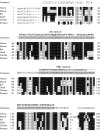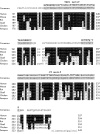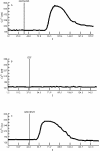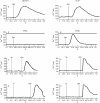A role for CCN3 (NOV) in calcium signalling
- PMID: 12147716
- PMCID: PMC1187188
- DOI: 10.1136/mp.55.4.250
A role for CCN3 (NOV) in calcium signalling
Abstract
Aims: In animals and humans increased expression of CCN3 (NOV) is detected in tissues where calcium is a key regulator, such as the adrenal gland, central nervous system, bone and cartilage, heart muscle, and kidney. Because the multimodular structure of the CCN proteins strongly suggests that these cell growth regulators are metalloproteins, this study investigated the possible role of CCN3 in ion flux and transport during development, control of cell proliferation, differentiation, and pathobiology.
Methods: The isolation of CCN3 partners was performed by means of the two hybrid system. Yeasts were cotransfected with an HL60 cDNA library fused to the transactivation domain of the GAL4 transcription factor, and with a plasmid expressing CCN3 fused to the DNA binding domain of GAL4. Screening of the recombinant clones selected on the basis of leucine, histidine, and tryptophan prototrophy was performed with a beta-galactosidase assay. After the interaction between CCN3 and its putative partners was checked with a GST (glutathione S-transferase) pull down assay, the positive clones were identified by cloning. To establish whether the CCN3 protein affected calcium ion flux, a dynamic imaging microscopy system was used, which allowed the fluorometric measurement of the intracellular calcium concentration. The proteins used in the assays were GST fused with either CCN3 or CCN2 (CTGF) and GST alone as a control.
Results: The two hybrid system identified the S100A4 (mts1) calcium binding protein as a partner of CCN3 and the use of the GST fusion proteins showed that the addition of CCN3 and CCN2 to G59 glioblastoma and SK-N-SH neuroblastoma cells caused a pronounced but transient increase of intracellular calcium, originating from both the entry of extracellular calcium and the mobilisation of intracellular stores.
Conclusions: The interaction of CCN3 with S100A4 may account, in part, for the association of CCN3 with carcinogenesis and its pattern of expression in normal conditions. The increased intracellular calcium concentrations induced by CCN3 and CCN2 both involve different processes, among which voltage independent calcium channels might be of considerable importance in regulating the calcium flux associated with cell growth control, motility, and spreading. These observations assign for the first time a biological function to the CCN3 protein and point out a broader role for the CCN proteins in calcium ion signalling.
Figures







References
-
- Bork P. The modular architecture of a new family of growth regulators related to connective tissue growth factor. FEBS Lett 1993;327:125–30. - PubMed
-
- Lau LF, Lam SC. The CCN family of angiogenic regulators: the connection. Exp Cell Res 1999;248:44–57. - PubMed
-
- Brigstock DR. The connective tissue growth factor/cysteine-rich 61/nephroblastoma overexpressed (CCN) family. Endocr Rev 1999;20:189–206. - PubMed
-
- Hashimoto BY, Shindo-Okada N, Tani M, et al. Expression of the ELM1 gene, a novel gene of the CCN (connective tissue growth factor, Cyr61/Cef10, and neuroblastoma overexpressed gene) family, suppresses in vivo tumor growth and metastasis of K-1735 murine melanoma cells. J Exp Med 1998;187:289–96. - PMC - PubMed
Publication types
MeSH terms
Substances
LinkOut - more resources
Full Text Sources
Other Literature Sources
Research Materials
Miscellaneous
